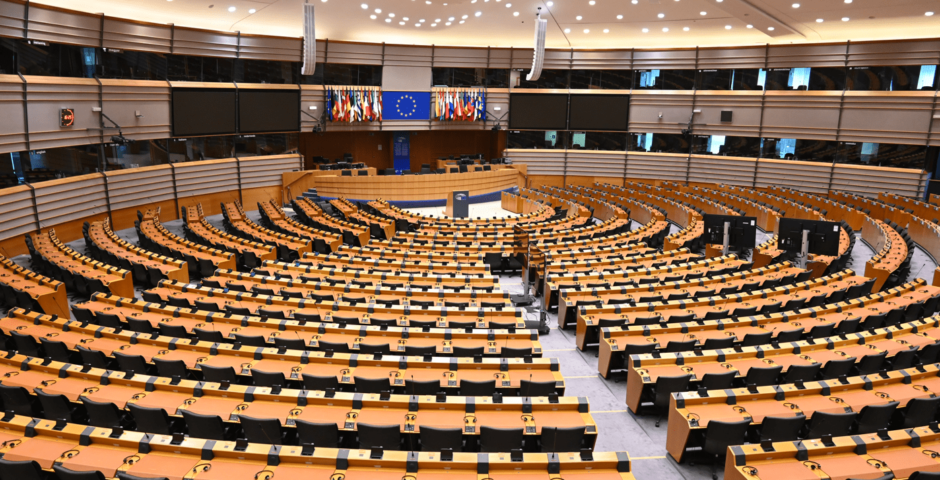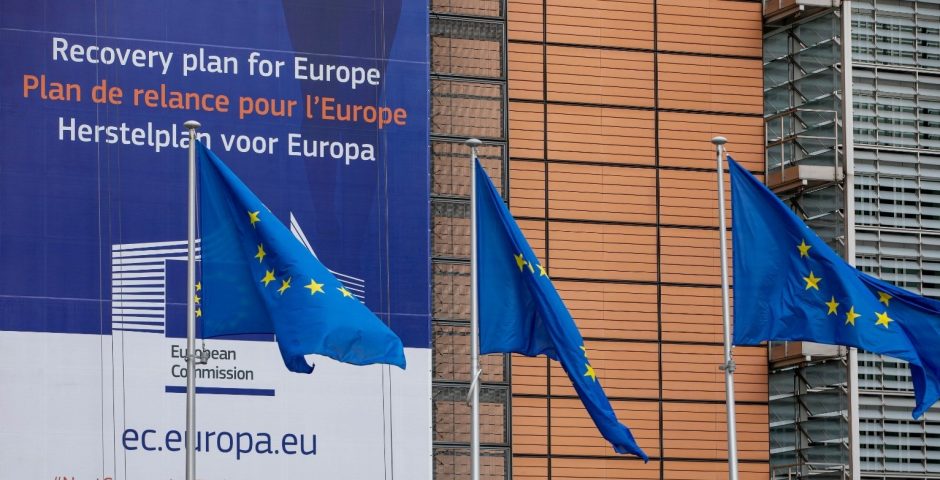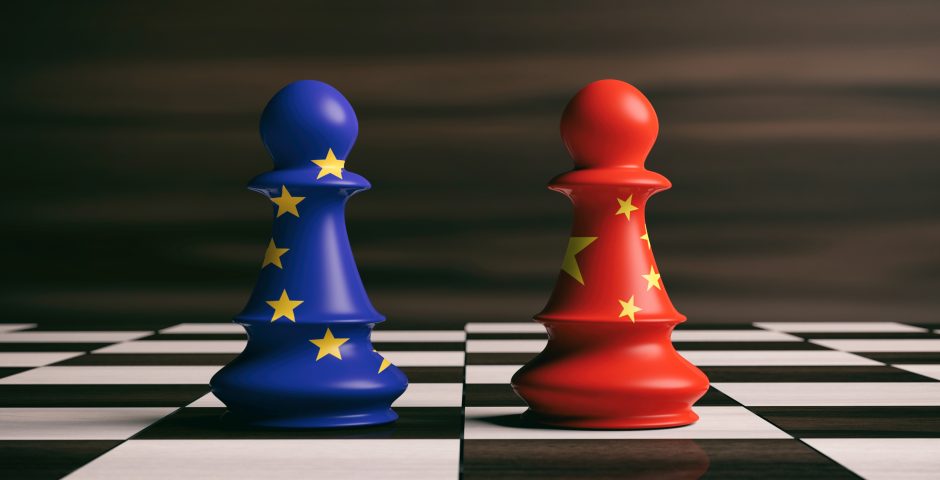The history of the European Parliament

All you need to know about the history of this 55-year-old parliament.

Every five years, we get to vote for the European Parliament, and Europeans will have this opportunity again in June 2024 for the ninth time. After India, the Parliament has the largest electorate (the number of people who can vote). But how did this Parliament come about and what influence does it have? In the following explainer, we will delve deeper into the history of the European Parliament, shifts in seats, and turnout among eligible voters.
The establishment of the first European institutions
After World War II, there was a need among some (Western) European countries to strengthen their cooperation. This had various reasons, including security considerations, economic considerations, and the desire to enter an era of peace. An important cause was to prevent a new war on the continent. The Frenchman Jean Monet, who is seen as one of the founding fathers of the European Union (EU), believed that a new war could be prevented if France cooperated with Germany in the field of coal and steel. Coal and steel are important raw materials for the war industry and many wars between Germany and France were fought in areas with a lot of coal and steel (such as Alsace-Lorraine). West Germany and the French Minister of Foreign Affairs, Robert Schuman, also believed in this idea and wrote the Schuman Plan.
This led to the establishment of the European Coal and Steel Community in 1952. The community consisted of Belgium, West Germany, France, Italy, the Netherlands, and Luxembourg. The Treaty of Rome (1957) later established two other organizations, namely Euratom (the European Atomic Energy Community) and the European Economic Community (EEC). This brought the idea of a more united Europe further. Some also see the Benelux as the precursor to the EU. This cooperation started in 1944 intending to form a customs union between Belgium, The Netherlands, and The Benelux. This means that the three countries have the same import tariffs for goods outside the Benelux.
First forms of participation
There was no European Parliament yet during the establishment of the European institutions. However, there were certainly ambitions to establish that. It started with the establishment of the European Parliamentary Assembly in 1958. This body had representation from parliamentarians from the various member states. National parliaments chose who would be sent to this Assembly. Citizens could not vote directly for the members of this assembly. Moreover, the Parliamentary Assembly was an advisory institution, which means that it was allowed to give advice, but it did not have the same (legislative) tasks as national parliaments.
This is why critics argued that the Parliamentary Assembly had a severe democratic deficit because the representation was so indirect that European residents had little to say within the European institutions. Still, however, this is seen as the birth of the European Parliament, because members grouped themselves based on political ideology (socialism, liberalism, Christian democrats, etc.) instead of nationality.
Over the years, the European institutions have become increasingly complex. At the end of the 1950s, there were three different advisory assemblies: the European Economic Community, Euratom, and the European Coal and Steel Community. These advisory assemblies were brought together under the European Parliamentary Assembly. From 1962, they continued as the European Parliament.
Towards the first elections
In the Treaty of Rome of 1957 already discussed the idea of a directly elected parliament. However, many member states had different voting procedures, and the EEC wanted one uniform voting procedure for the entire Union. This turned out to be more difficult than anticipated, which is why the start of the first election also took longer. This is due, for example, to the fact that the age at which citizens are granted the right to vote varies from country to country. If these issues were to be equalized, it would require major changes to some countries’ constitutions, and there was little support for this.
Because this took so long, the Parliament threatened to take the European Council to court. As a result, the Council agreed to the execution of elections, and the issue of a uniform voting procedure was postponed. The decisions to go ahead with the elections could be directed to the sentiment that the European project could not succeed without firm citizens’ participation. Only then would it gain the necessary legitimacy among residents. In June 1979, direct elections were held for the first time, meaning that residents could vote directly for a candidate. The first parliament had a term from 1979 to 1985. Elections were held in nine countries for 410 seats. For comparison: in 2024, elections will be held in 27 countries for 720 seats. Simone Veil was elected as the first (female) president.
Expanding power
Over the years, the European Parliament has gained more and more rights and is allowed to decide on more matters. For example, it increasingly drafts proposals for the European Council and has more budgetary powers. In 1999, for example, Parliament withdrew its support for the Santer Commission, after which the Commission resigned.
The Single European Act of 1986 was an important step for Parliament in gaining more influence. This act stipulated that the accession of member states and the conclusion of association agreements with third countries must also be approved by Parliament. With the Treaty of the European Union of 1992, the Parliament gained more rights, particularly the right to participate in decision-making in various areas. From then on, it became more and more a second legislative power. For example, the Parliament has approved the membership of the European Commission. The Amsterdam Treaty of 1997 gave Parliament new powers, putting it on a more equal footing with the Commission. Thanks to the Nice Treaty (2001), more and more issues could be decided by majority decisions in Parliament. This is an important step for more democracy. However, this also means that individual member states or small groups of member states can block less legislation. This is easier when voting is based on consensus. Critics argue that this development damages the autonomy of individual member states.
Interim elections and changing seats
At the accession of new member states, so-called interim elections were planned. In total, six interim elections have been held. With each new member state, seats are added and the seat distribution of the other member states shifts. Now, no more interim elections are held. When new member states join, new seats are temporarily added to Parliament until the new round of elections. An evaluation is also made of how many seats are needed in total. The Lisbon Treaty (2009) set a maximum of 751 seats. This number can be temporarily increased to 754 when a new member state joins. Even after the resignation of member states, the number of seats is shifted again. Of the 73 British seats, 27 were redistributed among the member states after BREXIT. The remaining 46 were reserved for any future member states. For example, France received five extra seats and the Netherlands received three more. In 2024, Parliament will distribute fifteen extra seats (from 705 to 720). This is based on demographic changes. The Netherlands will, then, again receive two extra seats because the country has relatively gained more inhabitants in recent years.
Voter turnout
Voter turnout in European elections is almost always lower than in national elections. It is striking that turnout was highest during the first election – in 1976. At that time, 61.99% of eligible voters cast their vote. After that, turnout decreased with each election until 2014, when turnout was only 42.61%. In 2019, there was an increase again, when 50.95% of eligible voters voted in the European elections. The decline until 2014 is also interesting because Parliament gained more and more power between 1976 and 2014, there were more controversial debates, and more eurosceptic parties emerged. The relevance of voting has arguably increased during this period.
Different experts have different explanations for this. Some see a direct relationship between the decrease in turnout for the European elections and a decrease in support for the European Union. Others argue that the drop is due to the EU’s expansion with member states that either had little experience with democracy or had lower turnout in their national elections than older member states such as Belgium, where often 90% of eligible voters go to the polls. As a result, the EU’s average also went down. Some academics attribute the increase in 2019 to Brexit, combined with a Spitzenkandidaten Election (you can read more about Spitzenkandidaten later in our series!).
In conclusion
In its almost fifty-year history, the European Parliament has undergone several transformations. We see that EU citizens are increasingly getting a more direct say in European politics. However, there is still much to be gained regarding the parliament’s rights and voter turnout.
Anoek has a Master’s degree in International Relations and a Bachelor’s degree in Political Science. She currently works as an advisor in the public sector.
Header image: Shutterstock




